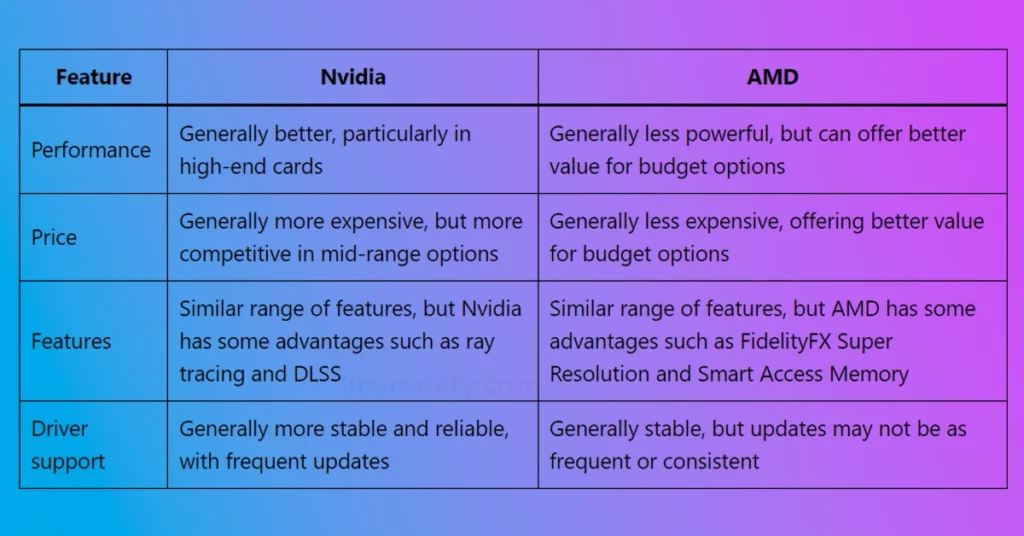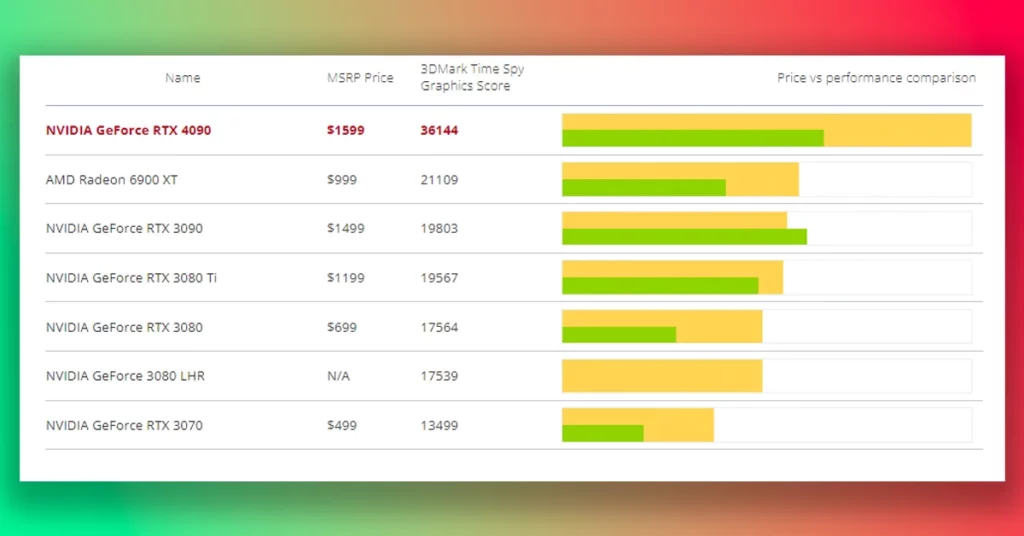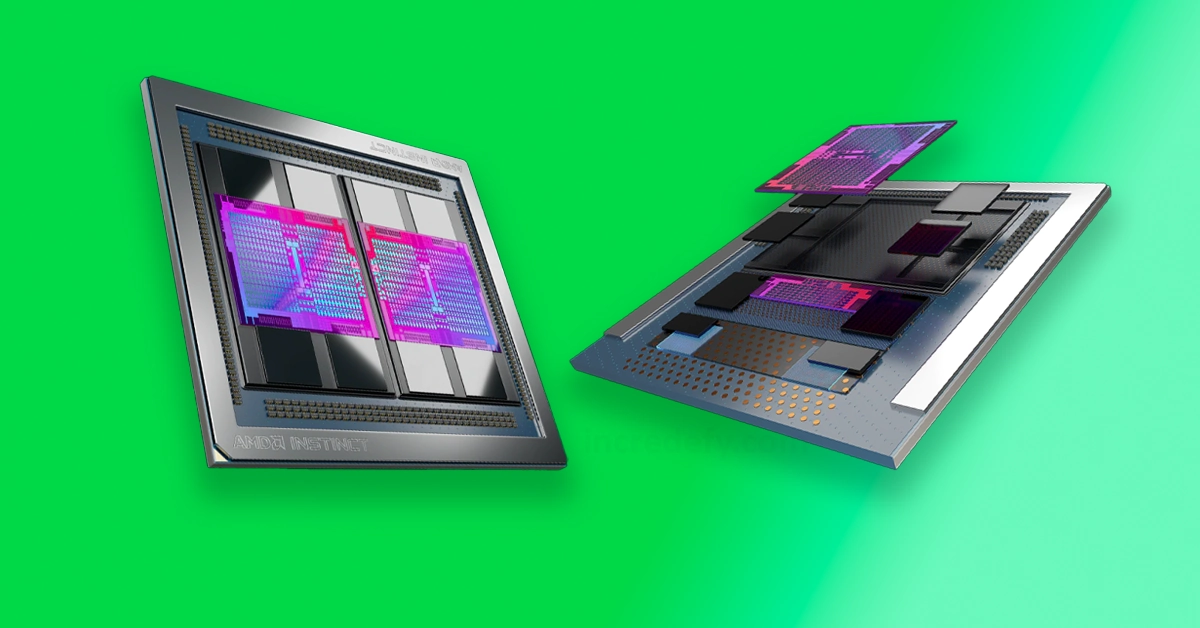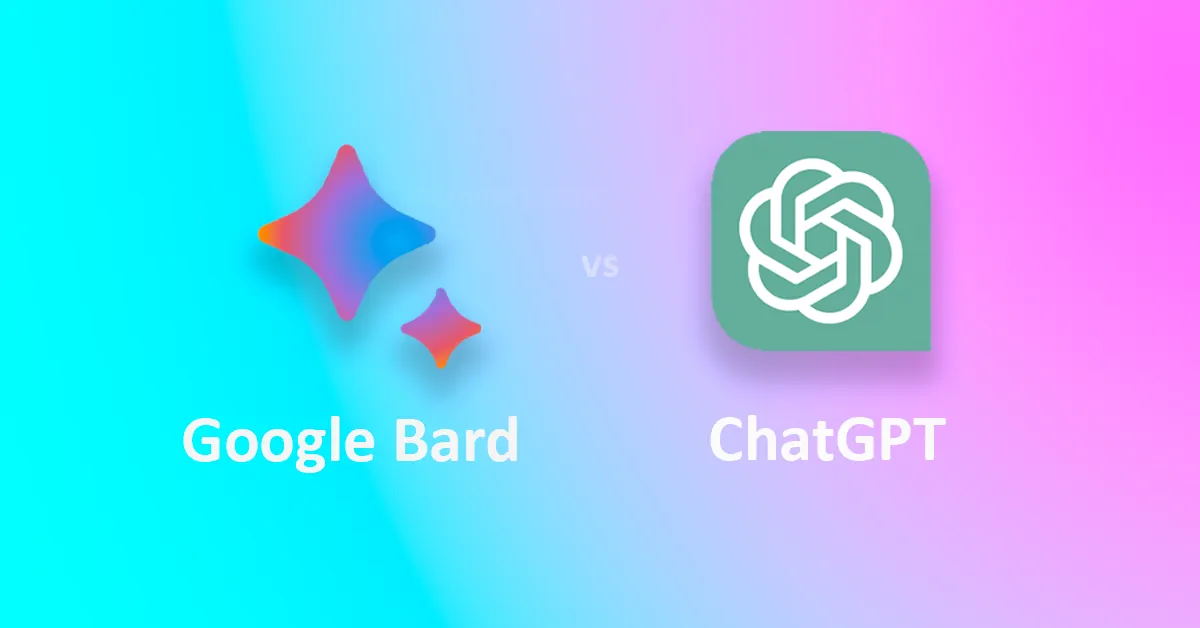
Nvidia vs AMD – Which Brand’s Graphics Card is Best For You (2023)
Snehil
- 1
The competition between Nvidia and AMD in the gaming and graphic design industries never seems to end. Consumers are always asking themselves which brand offers the best graphics card. As we enter 2023, we’ll take a closer look at the latest advancements in technology and compare the features, performance, and price points of each brand’s graphics cards. By the end of this, you’ll have all the information you need to make an informed decision and take your gaming and creative experiences to new heights.
Table of Contents
The key differences between Nvidia and AMD graphics cards
Architecture: Nvidia uses a more traditional architecture, while AMD uses a more innovative one. This difference in architecture can lead to different performance and power efficiency characteristics.
Feature set: Nvidia has a more comprehensive feature set, including ray tracing and DLSS. AMD is catching up in this area, but Nvidia still has the lead.
Pricing: AMD graphics cards are generally more affordable than Nvidia graphics cards. This is due to a number of factors, including the different architectures and feature sets.
The differences in architecture, feature set, and pricing can affect performance and price in a number of ways. For example, Nvidia’s ray tracing performance is generally better than AMD’s, but it also requires more power. AMD’s graphics cards are generally more affordable, but they may not have the same feature set as Nvidia’s cards.
Ultimately, the best graphics card for you will depend on your specific needs and budget. If you need the best possible performance and don’t mind paying a premium, then Nvidia is the way to go. If you’re on a budget or want a card with a more comprehensive feature set, then AMD is a good option.
Here is an overview comparison of the two companies:

Nvidia vs AMD: A Brief History and the progress in GPUs
Both companies have played significant roles in the development of GPUs, which have transformed the computing landscape.
NVIDIA was founded in 1993 by Jensen Huang, Chris Malachowsky, and Curtis Priem. Their first product, the NV1, was released in 1995. It was an innovative graphics card that combined 2D and 3D acceleration, as well as audio and game controller functions. However, it wasn’t until the release of the RIVA TNT in 1998 that NVIDIA truly made a name for itself in the GPU market. The RIVA TNT was a powerful and cost-effective solution that outperformed its competitors.
In 1999, NVIDIA introduced the GeForce 256, the world’s first GPU. This groundbreaking product offloaded complex rendering tasks from the CPU, allowing for more realistic graphics and improved performance. Over the years, NVIDIA has continued to innovate, with notable releases such as the GeForce 8800 in 2006, which introduced unified shaders, and the GeForce GTX 1080 in 2016, which utilized the Pascal architecture for significant performance gains.
AMD, on the other hand, entered the GPU market through the acquisition of ATI Technologies in 2006. ATI was founded in 1985 by Lee Ka Lau, Francis Lau, Benny Lau, and Kwok Yuen Ho. They initially focused on producing integrated graphics solutions for PCs. In 2000, ATI released the Radeon series, which became their flagship GPU line. The Radeon 9700 Pro, released in 2002, was a particularly successful product, offering impressive performance and DirectX 9 support.
After acquiring ATI, AMD continued to develop the Radeon brand. In 2009, they introduced the Radeon HD 5000 series, which was the first to support DirectX 11. AMD has also been a pioneer in the development of APUs (Accelerated Processing Units), which combine CPU and GPU capabilities on a single chip. This innovation has been particularly beneficial for laptops and other compact devices.
Both NVIDIA and AMD have made significant contributions to the GPU market, driving innovation and competition. They have enabled advancements in gaming, artificial intelligence, and high-performance computing. As someone who has been deeply involved in the tech industry, I find it inspiring to see how these companies have evolved and continue to shape the future of computing.
What are some of the key features of the latest Nvidia and AMD GPUs, and how do they compare in terms of power consumption and heat output?
Nvidia and AMD are the two major players in the GPU market, and they have both recently released new products with impressive features. For Nvidia, their latest GPU architecture is called “Ampere.”
Some key features of Ampere GPUs include:
- Improved performance: Ampere GPUs offer significant performance improvements over the previous generation, thanks to their more efficient architecture and higher transistor density.
- Ray tracing: Nvidia’s RTX series GPUs, based on the Ampere architecture, have dedicated hardware for real-time ray tracing, which allows for more realistic lighting and reflections in games and other applications.
- DLSS (Deep Learning Super Sampling): This AI-powered technology uses machine learning to upscale lower-resolution images, providing higher-quality visuals with less computational power.
As for AMD, their latest GPU architecture is called “RDNA 2.”
Some key features of RDNA 2 GPUs include:
- Improved performance: RDNA 2 GPUs also offer significant performance improvements over the previous generation, with a focus on power efficiency and higher clock speeds.
- Ray tracing: AMD has introduced hardware-accelerated ray tracing with their RDNA 2-based GPUs, bringing them in line with Nvidia’s offerings.
- Infinity Cache: This is a high-speed cache that helps reduce memory latency and improve overall performance, particularly at higher resolutions.
In terms of power consumption and heat output, both companies have made strides in improving efficiency. However, the specific power consumption and heat output will depend on the exact GPU model and its use case. Generally speaking, Nvidia’s Ampere GPUs tend to consume more power and produce more heat than their AMD RDNA 2 counterparts, but this can vary depending on the workload and other factors.
It’s essential to consider your specific needs and preferences when choosing a GPU, as both Nvidia and AMD offer competitive products with unique features and performance characteristics.
Nvidia vs AMD: Comparison in terms of driver support and software features
Both Nvidia and AMD invest heavily in driver support and software features to ensure that their graphics cards deliver the best possible performance and user experience. Here’s a brief comparison of their driver support and software features:
Driver support: Both companies regularly release driver updates to improve performance, fix bugs, and add support for new games and applications. Nvidia has a reputation for providing more frequent driver updates, while AMD has made significant strides in recent years to improve its driver support.
Software features: Nvidia’s software suite is called GeForce Experience, and AMD’s is called Radeon Software Adrenalin. Both offer a range of features to help users optimize their graphics card performance.
GeForce Experience includes:
– Game optimization: Automatically adjusts in-game settings for the best performance and visual quality based on your hardware.
– ShadowPlay: Allows you to record and stream gameplay with minimal performance impact.
– Ansel: A powerful in-game photo mode for capturing high-quality screenshots.
– Freestyle: Offers real-time post-processing filters to customize the look of your games.
Radeon Software Adrenalin includes:
– Radeon Boost: Dynamically adjusts resolution during fast-paced gaming to improve performance without sacrificing visual quality.
– Radeon Anti-Lag: Reduces input lag by minimizing the time between a user’s input and the corresponding on-screen response.
– Radeon Image Sharpening: Enhances image quality by applying a sharpening filter to games without a significant performance impact.
– Radeon Chill: Dynamically adjusts frame rates based on in-game movement to save power and reduce heat output.
What are some of the best Nvidia and AMD GPUs for different types of users, such as gamers, content creators, and data scientists?
Different types of users have varying requirements when it comes to GPUs. Here’s a list of some of the best Nvidia and AMD GPUs for gamers, content creators, and data scientists:
For Gamers:
1. Nvidia GeForce RTX 3060 Ti: This GPU offers excellent performance for its price, making it a great choice for gamers on a budget who still want to enjoy ray tracing and high-quality visuals.
2. AMD Radeon RX 6700 XT: This GPU is a strong competitor in the mid-range market, offering great performance for 1440p gaming and support for hardware-accelerated ray tracing.
3. Nvidia GeForce RTX 3080: For high-end gaming, the RTX 3080 delivers outstanding performance, especially for 4K gaming and ray tracing. It’s a popular choice among enthusiasts.
4. AMD Radeon RX 6900 XT: This high-end GPU from AMD competes with the RTX 3080, offering excellent performance for 4K gaming and ray tracing support.
For Content Creators:
1. Nvidia GeForce RTX 3070: This GPU provides a good balance of performance and price for content creators, offering strong performance in creative applications like video editing, 3D rendering, and animation.
2. AMD Radeon RX 6800: The RX 6800 is a solid choice for content creators, with performance comparable to the RTX 3070 and a competitive price point.
3. Nvidia GeForce RTX 4090: For those who require the highest level of performance for content creation, the newly released RTX 4090 is a powerhouse, offering exceptional performance in creative applications and upto whopping 48GB of VRAM for handling large datasets and complex scenes.
For Data Scientists:
1. Nvidia A100: This GPU is specifically designed for data center and AI workloads, offering exceptional performance for deep learning, machine learning, and high-performance computing tasks.
2. Nvidia Titan RTX: The Titan RTX is a popular choice for data scientists who require a powerful GPU for their workstations. It offers excellent performance in AI and machine learning tasks, along with 24GB of VRAM for handling large datasets.
3. AMD Radeon Instinct MI100: This GPU is AMD’s offering for data center and AI workloads, providing strong performance for machine learning and high-performance computing tasks.
It’s essential to consider your specific needs, budget, and use case when choosing a GPU. Both Nvidia and AMD offer a range of options to cater to different types of users, from gamers and content creators to data scientists.
Nvidia vs AMD: Compatibility with different OS and software applications
Nvidia and AMD GPUs are generally compatible with a wide range of operating systems and software applications. However, there are some differences in terms of compatibility and support that users should consider when choosing between the two.
Operating System Compatibility:
Both Nvidia and AMD GPUs are well-supported on Windows, which is the most popular operating system for gaming and many professional applications. On macOS, support for AMD GPUs is more prevalent, as Apple has transitioned away from using Nvidia GPUs in their products. For Linux users, both Nvidia and AMD GPUs are supported, but AMD GPUs tend to have better open-source driver support, which can be an advantage for some users.
Software Application Compatibility:
Most popular software applications and games are compatible with both Nvidia and AMD GPUs. However, some applications may be optimized for one brand over the other, leading to better performance or additional features. For example, certain professional applications like Adobe Premiere Pro and DaVinci Resolve may have better optimization for Nvidia GPUs due to their support for CUDA, Nvidia’s parallel computing platform. On the other hand, some applications may perform better on AMD GPUs due to their support for OpenCL, an open standard for parallel programming.
Ray Tracing and AI Features:
Nvidia’s RTX series GPUs have dedicated hardware for real-time ray tracing and AI-powered features like DLSS (Deep Learning Super Sampling). While AMD’s RDNA 2-based GPUs also support hardware-accelerated ray tracing, their implementation and performance may differ from Nvidia’s. If you’re interested in using ray tracing or AI features in games or applications, it’s essential to research how well each GPU brand supports these technologies.
Ecosystem and Software Features:
As mentioned earlier, both Nvidia and AMD offer software suites (GeForce Experience and Radeon Software Adrenalin, respectively) that provide various features to optimize performance and enhance the user experience. Depending on your preferences and needs, you may find one software suite more appealing than the other.
When choosing between Nvidia and AMD GPUs, it’s crucial to consider your specific use case, operating system, and software requirements. Both companies offer competitive products with unique features and performance characteristics, so researching and comparing GPUs based on your needs will help you make an informed decision.

Nvidia vs AMD : Power Consumption and Efficiency
In the world of graphics cards, power consumption and efficiency are often overlooked, yet they play a crucial role in the overall performance and user experience. As Nvidia and AMD continue to vie for the title of the ultimate graphics card manufacturer, let’s see how these two titans stack up against each other.
Picture this: you’ve just built your dream gaming rig, complete with the latest and greatest graphics card from either Nvidia or AMD. But as you immerse yourself in the stunning visuals and lifelike gaming experiences, you can’t help but wonder – how much power is this beast consuming? And more importantly, is it using that power efficiently?
Nvidia has long been known for its energy-efficient GPUs, thanks to their cutting-edge architecture and innovative power-saving technologies. With each new generation, Nvidia pushes the boundaries of performance while keeping a keen eye on power consumption. Their Turing and Ampere architectures, for instance, have set new standards in the industry for energy efficiency, allowing gamers to enjoy breathtaking graphics without worrying about skyrocketing electricity bills.
On the other hand, AMD has historically struggled with power consumption, often requiring more juice to achieve similar performance levels as their Nvidia counterparts. However, the tide seems to be turning with the introduction of AMD’s RDNA and RDNA 2 architectures. These new designs have significantly improved power efficiency, allowing AMD cards to go toe-to-toe with Nvidia in terms of performance while keeping power consumption in check.
But the story doesn’t end there. As both companies continue to innovate and refine their technologies, the gap between them narrows, making the choice between Nvidia and AMD even more intriguing. For instance, AMD’s Smart Access Memory (SAM) and FidelityFX Super Resolution (FSR) technologies not only boost performance but also contribute to better power efficiency. Meanwhile, Nvidia’s DLSS (Deep Learning Super Sampling) technology leverages AI to upscale images, resulting in higher frame rates and reduced power consumption.
So, who reigns supreme in the battle of power consumption and efficiency? The answer isn’t as clear-cut as one might think. While Nvidia has historically held the crown, AMD’s recent advancements have made it a worthy contender. Ultimately, the choice between these two graphics card giants will depend on your specific needs, preferences, and budget.
As the saga of Nvidia vs AMD continues to unfold, one thing is certain – the future of graphics cards is brighter (and more energy-efficient) than ever before. So, buckle up and enjoy the ride as these two titans push the limits of power consumption and efficiency, taking us to new heights in the world of gaming and beyond.
How do Nvidia and AMD GPUs compare in terms of warranty and customer support, and what should users expect when dealing with these companies?
Both Nvidia and AMD are well-established companies in the GPU market, and they generally offer competitive warranty and customer support services. However, it’s important to note that the actual warranty and support experience may vary depending on the specific GPU model and the manufacturer of the graphics card, as companies like ASUS, MSI, Gigabyte, and EVGA produce cards based on Nvidia and AMD GPUs.
Here’s a general overview of what you can expect in terms of warranty and customer support from Nvidia and AMD:
Warranty period: The warranty period for graphics cards typically ranges from 2 to 3 years, depending on the manufacturer. Some companies may offer extended warranty options for an additional cost. It’s essential to check the warranty terms for the specific card you’re considering.
Warranty coverage: The warranty usually covers defects in materials and workmanship under normal use. It’s important to note that overclocking, modifying, or using the card outside of its intended purpose may void the warranty.
Customer support: Both Nvidia and AMD offer customer support through their websites, including knowledge bases, FAQs, and support forums. You can also contact their support teams via email, phone, or live chat. However, for issues related to a specific graphics card, you may need to contact the card manufacturer directly.
RMA process: If you need to return a defective card under warranty, you’ll typically need to go through the card manufacturer’s RMA (Return Merchandise Authorization) process. This may involve providing proof of purchase, describing the issue, and shipping the card to the manufacturer for repair or replacement.
Community support: Both Nvidia and AMD have active user communities that can provide additional support and troubleshooting advice. You can find these communities on forums, social media, and other online platforms.
When choosing a graphics card, it’s essential to consider not only the performance and features of the GPU but also the reputation and support offered by the card manufacturer. Researching customer reviews and experiences can help you make an informed decision and ensure a positive experience with your chosen GPU.

Nvidia vs AMD: Price Comparison
When deciding between Nvidia and AMD graphics cards, price is often a crucial factor for many buyers. Luckily, both manufacturers provide a variety of options to accommodate different budgets and requirements.
In the high-end market segment, AMD’s products tend to be more affordable than Nvidia’s. For instance, the RX 6800 XT is available for around $549 on Amazon, while the RTX 3080 is priced at approximately $899, making it less expensive per frame in Cyberpunk 2077 at 1080p Ultra without ray tracing. Additionally, the RTX 3090 Ti can be found for as low as $1,200, while the RX 6950 XT is available for a minimum of $789 on Amazon.
Conversely, if you’re seeking a cost-effective solution, AMD cards generally deliver better value. The RX 6600 can be found for as low as $229, which is less expensive per frame than the RTX 3050, priced at a minimum of $269. Moreover, the RX 6700 XT is available for $349, while the RTX 3070 costs around $499.

AMD is also an excellent choice for those who don’t intend to use ray tracing or primarily need a graphics card for gaming. In this scenario, AMD cards provide better value per dollar compared to Nvidia. In fact, when comparing frame rates per dollar, AMD emerges as the winner. For example, the RX 6650 XT is priced at $350 ($4.45 per frame), while the best value Nvidia card is the Founder’s Edition RTX 3060 Ti for $400 ($4.70 per frame).
Another vital factor to consider is AMD’s FidelityFX Super Resolution (FSR) technology, which enhances frame rates without compromising image quality. With FSR enabled, AMD cards can significantly increase frame rates, making them an even more attractive option in terms of value.
In conclusion, when selecting between Nvidia and AMD graphics cards, it’s essential to evaluate your needs, budget, and the games or applications you plan to use the card for. While Nvidia cards may deliver superior performance in some instances, AMD cards generally provide better value for money and are an excellent option for those on a budget or primarily seeking a gaming-centric card.



I just could not leave your web site before suggesting that I really enjoyed the standard information a person supply to your visitors Is gonna be again steadily in order to check up on new posts